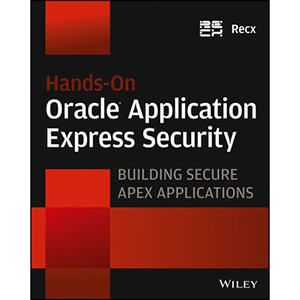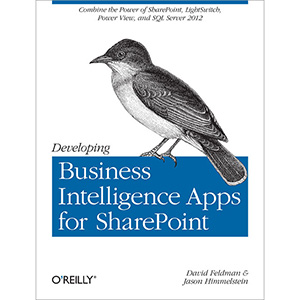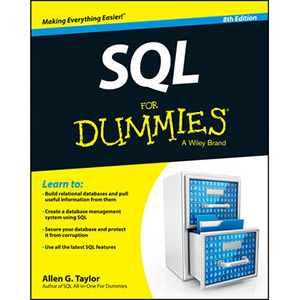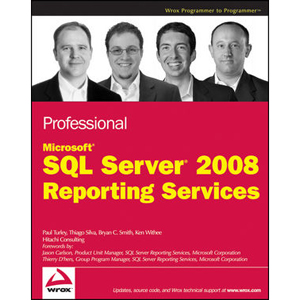DB2 Developer’s Guide, 6th Edition
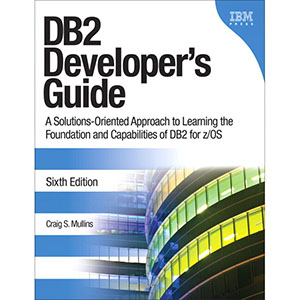
The Definitive Solutions-Oriented Guide to DB2 for z/OS: Now Fully Updated for Both v9 and v10!
DB2 Developer’s Guide is the world’s #1 go-to source for on-the-job information on programming and administering DB2. Now, three-time IBM Information Champion Craig S. Mullins has thoroughly updated this classic for the newest versions of DB2 for z/OS: DB2 V9 andV10.
This Sixth Edition builds on the unique approach that has made previous editions so valuable. It brings together condensed, easy-to-read coverage of all essential topics: information otherwise scattered through dozens of IBM and third-party documents. Throughout, Mullins offers focused drill-down on the key details DB2 developers need to succeed, with expert, field-tested implementation advice and realistic examples.
Extensive updates address IBM’s latest DB2 for z/OS innovations and best practices. Mullins introduces DB2’s newest data types, performance and security enhancements, pureXML support, and much more. Whether you’re a professional DB2 developer, DBA, sysadmin, or advanced user, this book will make you more productive, effective, and successful.
Coverage includes
- Modern DB2 SQL tools, tips, and tricks
- Best practices for data definition, indexing, and change management
- Large objects and object/relational databases
- Temporal data support
- DB2 security, authorization, and auditing
- Dynamic SQL programming and DB2 stored procedures
- “Under the hood” with the DB2 Optimizer and Catalog
- Performance monitoring in-depth: EXPLAIN, object monitoring, and RTS
- REORG, RUNSTATS, REBIND: superior approaches to managing DB2 access path changes
- DB2 tuning: environment, components, and resource governing
- Optimizing DB2 utilities and command
Table of Contents
PART I: SQL TECHNIQUES, TIPS, AND TRICKS
Chapter 1. The Magic Words
Chapter 2. Data Manipulation Guidelines
Chapter 3. Using DB2 Functions
Chapter 4. Using DB2 User-Defined Functions and Data Types
Chapter 5. Data Definition Guidelines
Chapter 6. DB2 Indexing and Hashing Guidelines
Chapter 7. Database Change Management, Schema Evolution, and Database Definition On Demand
Chapter 9. Large Objects and Object/Relational Databases
Chapter 10. pureXML: Using XML in DB2 for z/OS
Chapter 11. Supporting Temporal Data in DB2 for z/OS
Chapter 12. DB2 Security, Authorization, and Auditing
PART II: DB2 APPLICATION DEVELOPMENT
Chapter 13. Using DB2 in an Application Program
Chapter 14. Dynamic SQL Programming
Chapter 15. Program Preparation
Chapter 16. Using DB2 Stored Procedures
Chapter 17. DB2 and the Internet
PART III: DB2 IN-DEPTH
Chapter 18. The Doors to DB2
Chapter 19. Data Sharing
Chapter 20. DB2 Behind the Scenes
Chapter 21. The Optimizer
Chapter 22. The Table-Based Infrastructure of DB2
Chapter 23. Locking DB2 Data
PART IV: DB2 PERFORMANCE MONITORING
Chapter 24. DB2 Performance Monitoring
Chapter 25. Using EXPLAIN
Chapter 26. The Five R’s
Chapter 27. DB2 Object Monitoring Using the DB2 Catalog and RTS
PART V: DB2 PERFORMANCE TUNING
Chapter 28. Tuning DB2’s Environment
Chapter 29. Tuning DB2’s Components
Chapter 30. DB2 Resource Governing
PART VI: DB2 UTILITIES AND COMMANDS
Chapter 31. An Introduction to DB2 Utilities
Chapter 32. Data Consistency Utilities
Chapter 33. Backup and Recovery Utilities
Chapter 34. Data Movement and Organization Utilities
Chapter 35. Catalog Manipulation Utilities
Chapter 36. Stand-Alone Utilities and Sample Programs
Chapter 37. DB2 Commands
Chapter 38. DB2 Utility and Command Guidelines
Chapter 39. DB2 Contingency Planning
PART VII: THE IDEAL DB2 ENVIRONMENT
Chapter 40. Components of a Total DB2 Solution
Chapter 41. Organizational Issues
Part VIII Distributed DB2
Chapter 42. DRDA
Chapter 43. Distributed DB2
Chapter 44. DB2 Connect
Chapter 45. Distribution Guidelines
Chapter 46. Data Warehousing with DB2
Book Details
- Paperback: 1656 pages
- Publisher: IBM Press; 6th Edition (April 2012)
- Language: English
- ISBN-10: 0132836424
- ISBN-13: 978-0132836425

